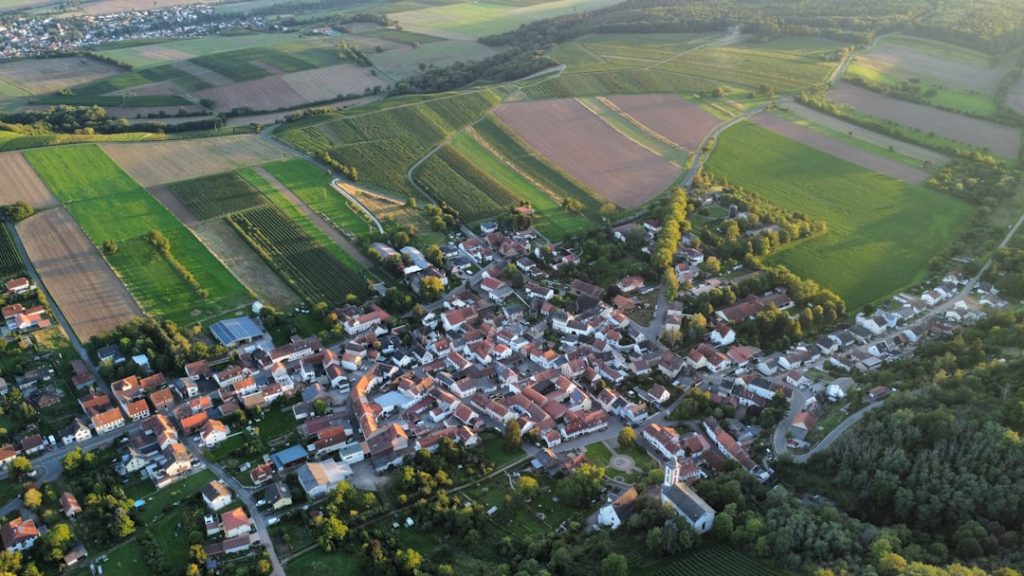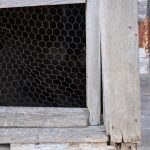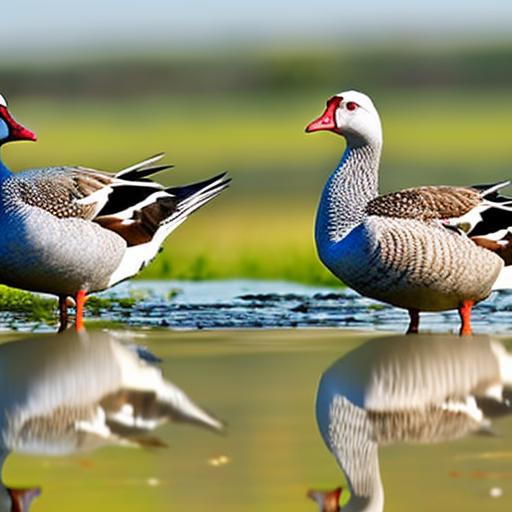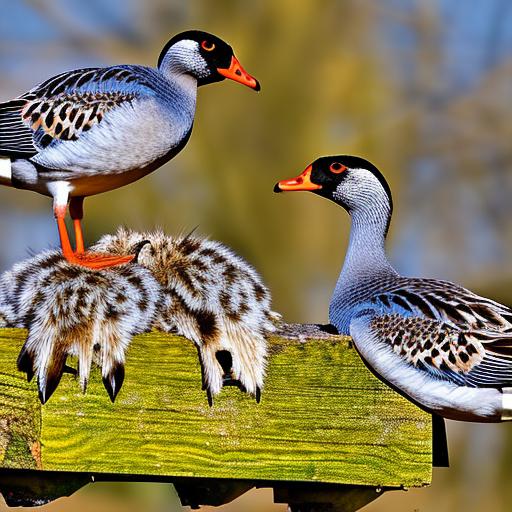Chickens are social creatures that thrive in flocks. They establish a hierarchical structure known as a pecking order, where dominant individuals assert authority over others. Understanding this social dynamic is essential for creating an appropriate living environment.
Adequate space is crucial to allow chickens to establish their pecking order without overcrowding, which can lead to aggression and stress. Chickens are natural foragers, instinctively scratching and pecking at the ground for insects and plants. Providing opportunities for these behaviors promotes mental and physical stimulation, contributing to their overall well-being.
These birds are sensitive to environmental changes and can easily become stressed. Loud noises, sudden movements, or alterations in their living conditions may cause distress. Gentle handling and a calm, predictable environment are important for their comfort.
As prey animals, chickens are constantly vigilant for potential threats. They have a natural instinct to seek shelter and hiding spots. Secure coops and shelters are essential for their protection, especially at night or during perceived danger.
Chickens are diurnal, meaning they are most active during daylight hours and rest at night. Understanding their natural sleep patterns is crucial for creating an environment that allows for undisturbed rest periods.
Table of Contents
- 1 Creating a Proper Living Environment for Chickens
- 2 Implementing Rotational Grazing Techniques
- 3 Providing Alternative Areas for Chickens to Roam
- 4 Using Chicken Tractors
- 5 Utilizing Natural Remedies to Protect Grass
- 6 Regular Maintenance and Monitoring of Grass Health
- 7 FAQs
- 7.1 What are some ways to keep chickens from killing grass?
- 7.2 Why do chickens kill grass?
- 7.3 How can providing a designated foraging area help prevent chickens from killing grass?
- 7.4 What is a chicken tractor and how can it help prevent grass damage?
- 7.5 Are there any plants or grass species that are more resistant to damage from chickens?
Key Takeaways
- Chickens have natural behaviors such as scratching, dust bathing, and foraging that should be understood and accommodated in their living environment.
- A proper living environment for chickens includes providing adequate space, shelter, and access to fresh water and nutritious feed.
- Rotational grazing techniques can help maintain the health of the grass and soil, while also preventing overgrazing and allowing for natural regeneration.
- Providing alternative areas for chickens to roam, such as wooded areas or gardens, can help prevent boredom and reduce the risk of overgrazing in one area.
- Chicken tractors are portable coops that can be moved around the pasture to provide chickens with fresh foraging opportunities while protecting the grass from overgrazing.
- Natural remedies such as herbal supplements and essential oils can be used to protect grass from damage caused by chicken activity.
- Regular maintenance and monitoring of grass health is essential to ensure that the pasture remains productive and sustainable for the chickens.
Creating a Proper Living Environment for Chickens
Space and Comfort
The size of the coop and outdoor run should allow for at least 2-3 square feet per chicken inside the coop and 8-10 square feet per chicken in the outdoor run. This ensures that the chickens have enough space to move around comfortably and establish their pecking order without overcrowding.
Shelter and Protection
Providing roosting bars inside the coop gives chickens a place to perch at night, which is a natural behavior for them. Shelter is also crucial for chickens, as it provides protection from predators and the elements. The coop should be secure, with no gaps or holes that predators could enter through.
Health and Nutrition
It’s important to provide adequate ventilation while also keeping the coop draft-free to prevent respiratory issues in the chickens. Nesting boxes should be provided for egg-laying hens, with one box for every 3-4 hens. Access to food and water is essential for the health and well-being of chickens. Clean water should be available at all times, and feeders should be kept filled with a balanced diet appropriate for the chickens’ age and purpose. Additionally, providing access to grit and oyster shell allows chickens to regulate their calcium intake for strong eggshells.
Implementing Rotational Grazing Techniques

Rotational grazing involves moving livestock between different pastures or grazing areas to allow vegetation to recover and prevent overgrazing. Implementing rotational grazing techniques with chickens can benefit both the birds and the land they graze on. By rotating the chickens between different areas, it allows the vegetation in each area to recover, leading to healthier grass and soil.
Rotational grazing also helps control parasites and pathogens that can build up in the soil when chickens are kept in one area for an extended period. Moving the chickens to fresh pasture regularly breaks the life cycle of parasites and reduces the risk of disease transmission among the flock. Additionally, rotational grazing can help distribute manure more evenly across the land, providing natural fertilization for the grass and soil.
Furthermore, rotational grazing allows chickens access to fresh forage, insects, and other natural food sources. This can improve the nutritional quality of their diet and reduce reliance on commercial feed. Implementing rotational grazing techniques with chickens requires careful planning and management to ensure that the land is not overgrazed and that the chickens have access to adequate shelter, water, and protection from predators.
Providing Alternative Areas for Chickens to Roam
In addition to rotational grazing, providing alternative areas for chickens to roam can further enhance their well-being and allow for more natural behaviors. This can include setting up temporary fencing or electric netting to create new grazing areas within larger pastures or fields. Providing access to wooded areas or brushy areas allows chickens to explore new environments, find natural food sources, and seek out shelter from predators.
Creating alternative areas for chickens to roam can also help reduce boredom and aggression within the flock. Chickens are naturally curious animals that enjoy exploring new environments and finding new things to peck at and scratch around. Providing them with access to different areas can keep them mentally stimulated and reduce stress-related behaviors.
Furthermore, providing alternative areas for chickens to roam can help distribute their impact on the land more evenly. By allowing them access to different areas, it prevents overgrazing in one spot and allows vegetation in other areas to recover. This can lead to healthier grass and soil, as well as a more diverse habitat for wildlife.
Using Chicken Tractors
Chicken tractors are portable coops that allow chickens access to fresh pasture while still providing shelter and protection from predators. They are typically lightweight and easy to move, making them ideal for rotational grazing and managing pasture health. Chicken tractors can be moved daily or weekly to provide chickens with access to fresh grass, insects, and other natural food sources while preventing overgrazing in one area.
Using chicken tractors can also help distribute manure more evenly across the land, providing natural fertilization for the grass and soil. This can improve soil health and reduce the need for synthetic fertilizers. Additionally, chicken tractors can help control pests and weeds by allowing chickens to scratch and peck at the ground, reducing insect populations and preventing weed growth.
Furthermore, chicken tractors provide a secure shelter for chickens, protecting them from predators while still allowing them access to fresh air and sunlight. This can improve the overall health and well-being of the flock while also reducing the risk of disease transmission. Using chicken tractors as part of a rotational grazing system can benefit both the chickens and the land they graze on.
Utilizing Natural Remedies to Protect Grass

Diverse Grass Mixtures for Resilience
Utilizing natural remedies to protect grass from damage caused by chickens can help maintain healthy pasture while still allowing the birds access to fresh forage. One common natural remedy is planting a diverse mix of grasses and legumes that are more resilient to grazing pressure. This can include species like clover, alfalfa, or chicory, which are more tolerant of grazing and can recover more quickly than traditional grass species.
Herbal Ley Mixtures for Pasture Health
Another natural remedy is using herbal ley mixtures that include a variety of herbs known for their medicinal properties. These mixtures can help support the overall health of the pasture while providing natural remedies for common issues like parasites or digestive upset in the chickens. Herbs like plantain, chicory, and yarrow have been used traditionally as natural remedies for livestock health issues.
Rotational Grazing and Pasture Management
Furthermore, utilizing natural remedies like rotational grazing, rest periods for pastures, and proper pasture management techniques can help protect grass from damage caused by chickens. By allowing grasses time to recover between grazing periods and managing stocking rates carefully, it’s possible to maintain healthy pasture while still allowing chickens access to fresh forage.
Regular Maintenance and Monitoring of Grass Health
Regular maintenance and monitoring of grass health is essential for ensuring that pastures remain productive and healthy while supporting a flock of chickens. This includes practices like mowing pastures periodically to prevent grass from becoming too tall or overgrown, which can reduce its nutritional quality for grazing animals like chickens. Additionally, monitoring soil health through regular soil testing can help identify any nutrient deficiencies or imbalances that may be affecting grass growth.
This information can be used to make informed decisions about fertilization or soil amendment practices that can improve pasture health. Furthermore, regular monitoring of grass health involves keeping an eye out for signs of overgrazing or compaction in pastures. Overgrazing can lead to reduced grass productivity and soil erosion, while compaction can limit root growth and water infiltration in the soil.
By identifying these issues early on, it’s possible to take corrective action to improve pasture health and support a healthy flock of chickens. In conclusion, understanding the behavior of chickens is crucial for creating a proper living environment that supports their natural instincts and well-being. Implementing rotational grazing techniques, providing alternative areas for chickens to roam, using chicken tractors, utilizing natural remedies to protect grass, and regular maintenance and monitoring of grass health are all important aspects of managing pasture health while supporting a flock of chickens.
By taking these factors into consideration, it’s possible to create a sustainable system that benefits both the birds and the land they graze on.
If you’re looking for more tips on keeping chickens, you might want to check out this article on where to put a chicken coop. It offers valuable insights on the best location for your coop to ensure the health and safety of your chickens, as well as the preservation of your grass.
FAQs
What are some ways to keep chickens from killing grass?
Some ways to keep chickens from killing grass include providing them with a designated area for foraging, rotating their grazing area regularly, and using chicken tractors to move them around the yard.
Why do chickens kill grass?
Chickens can kill grass by overgrazing, scratching and pecking at the ground, and creating dust baths. This can lead to bare patches and damage to the grass.
How can providing a designated foraging area help prevent chickens from killing grass?
Providing a designated foraging area for chickens can help prevent them from killing grass by concentrating their activity in a specific area, allowing the rest of the yard to recover and regrow.
What is a chicken tractor and how can it help prevent grass damage?
A chicken tractor is a portable enclosure that can be moved around the yard. By using a chicken tractor, chickens can be rotated to different areas, allowing the grass to recover and preventing overgrazing in one spot.
Are there any plants or grass species that are more resistant to damage from chickens?
Some grass species, such as fescue and ryegrass, are more resistant to damage from chickens. Additionally, planting hardy ground covers and creating designated grazing areas can help protect the grass from damage.
Meet Walter, the feathered-friend fanatic of Florida! Nestled in the sunshine state, Walter struts through life with his feathered companions, clucking his way to happiness. With a coop that’s fancier than a five-star hotel, he’s the Don Juan of the chicken world. When he’s not teaching his hens to do the cha-cha, you’ll find him in a heated debate with his prized rooster, Sir Clucks-a-Lot. Walter’s poultry passion is no yolk; he’s the sunny-side-up guy you never knew you needed in your flock of friends!







